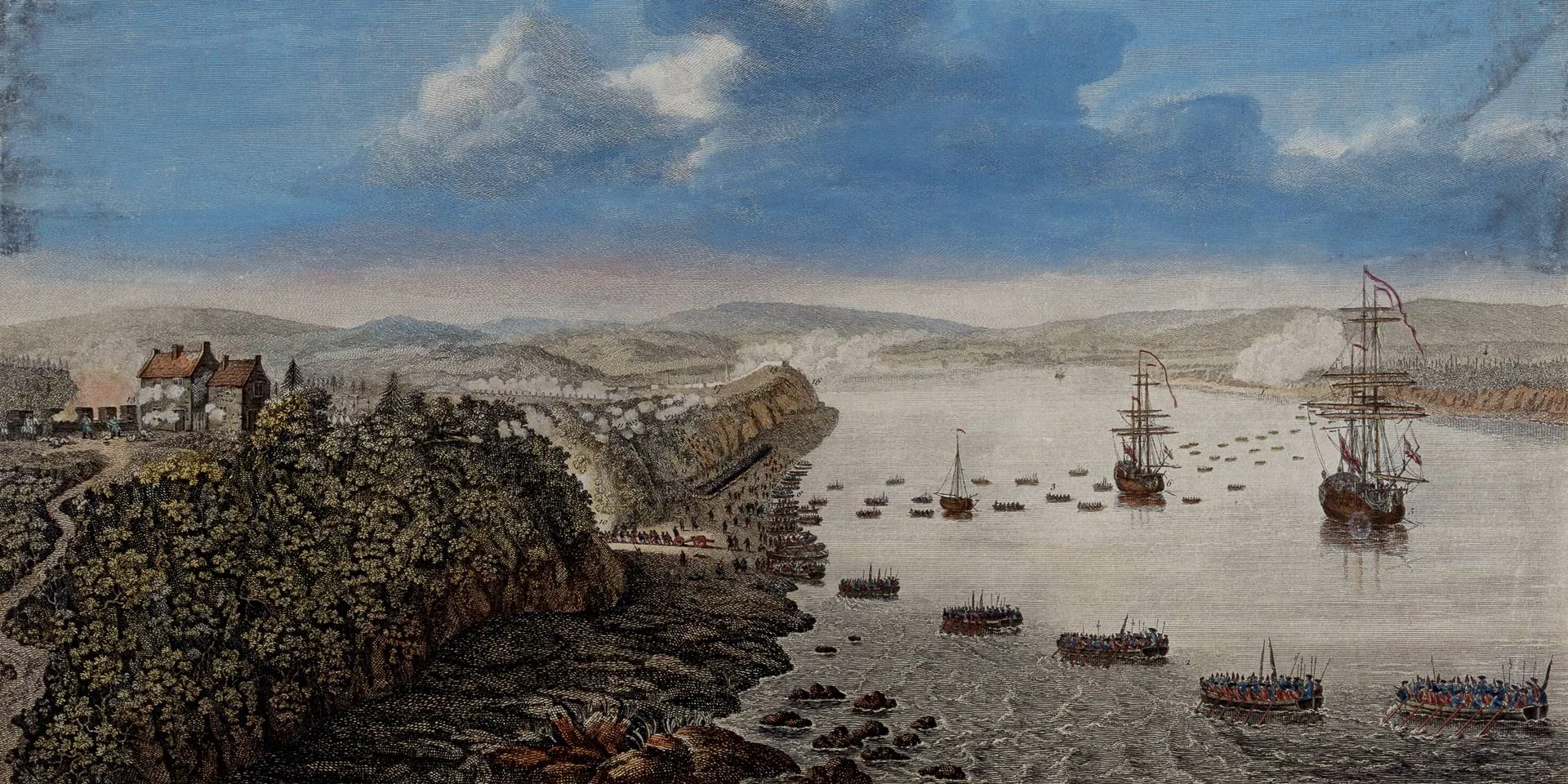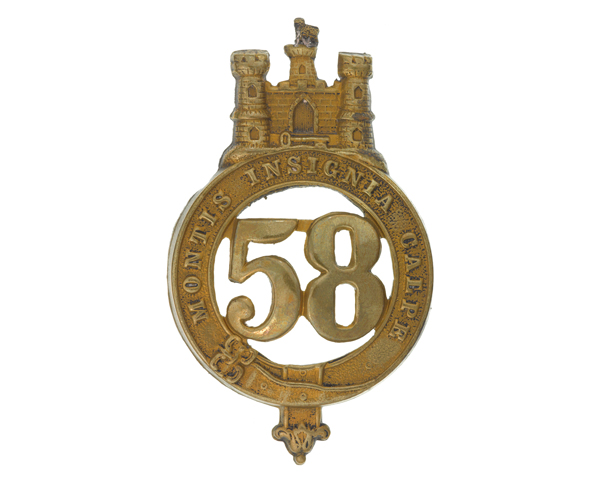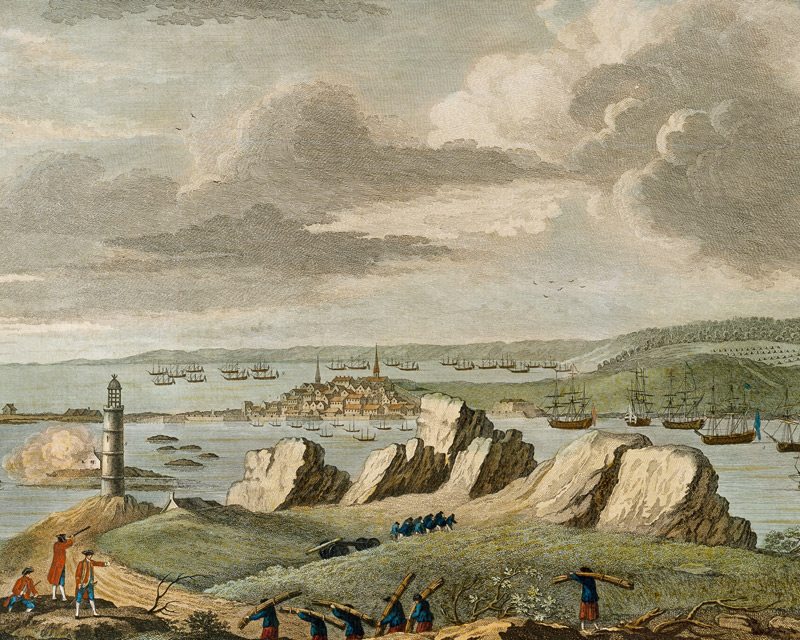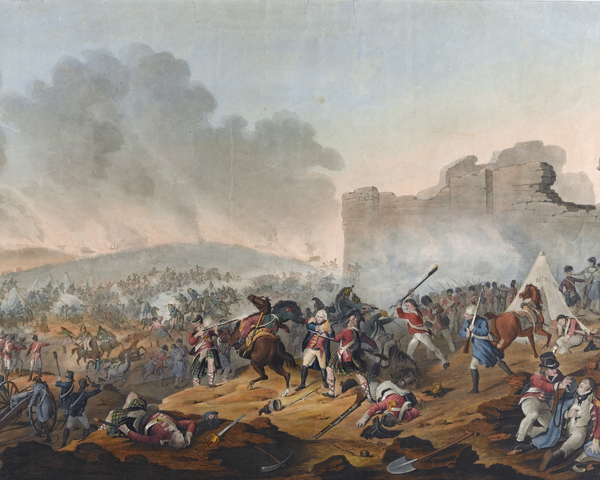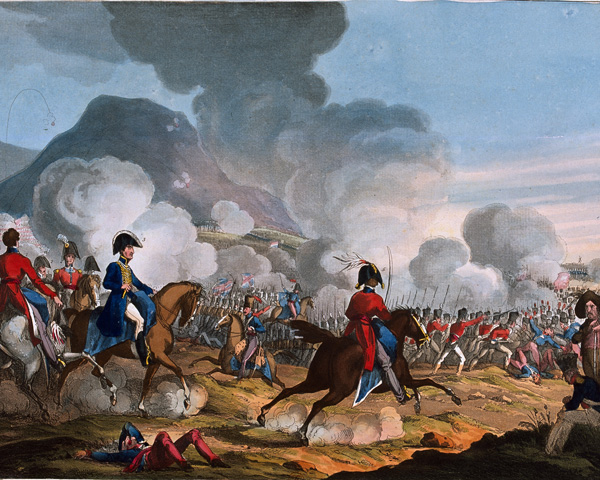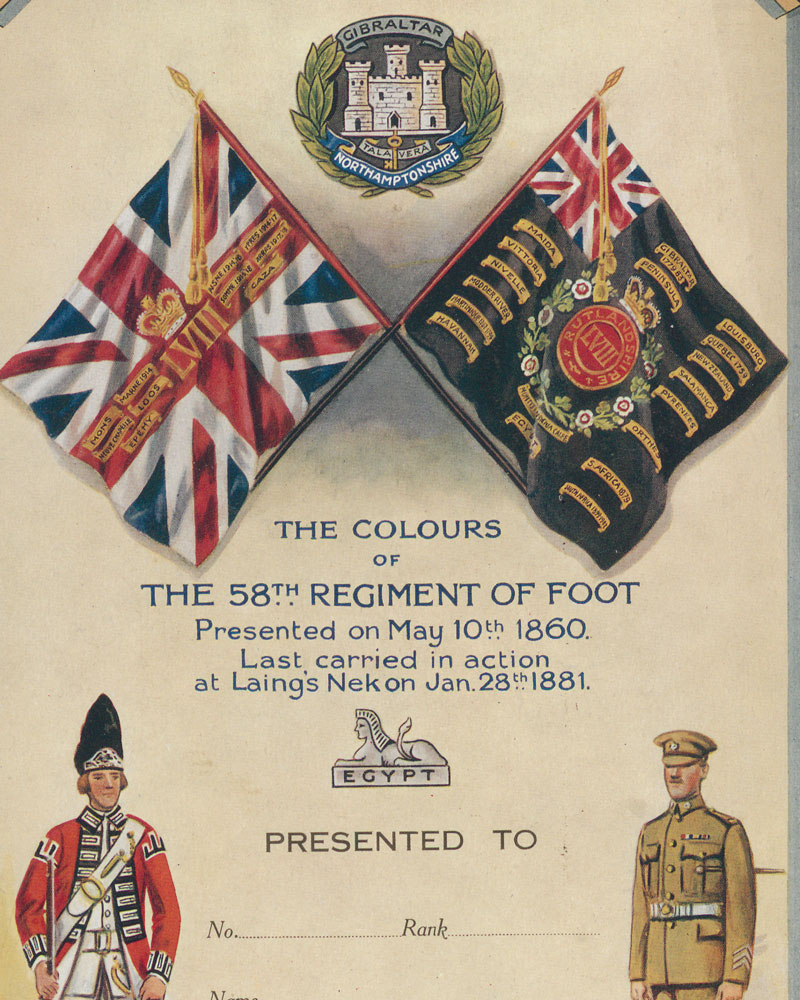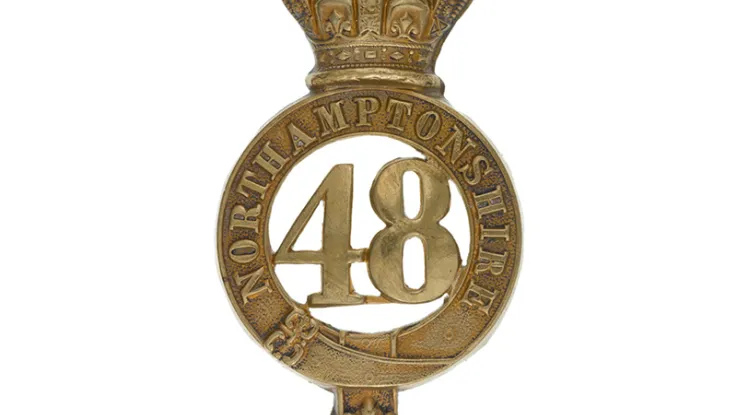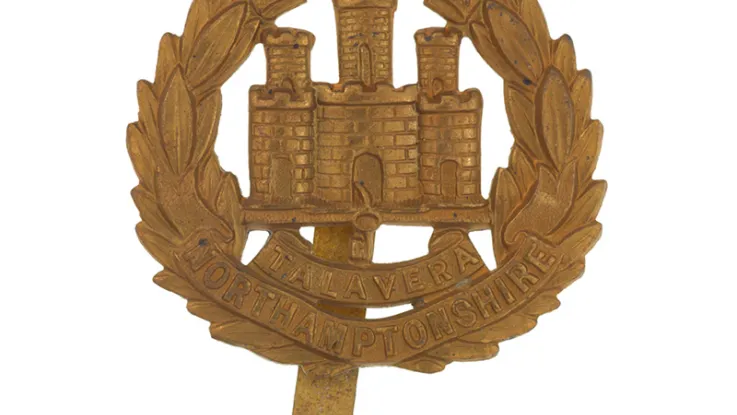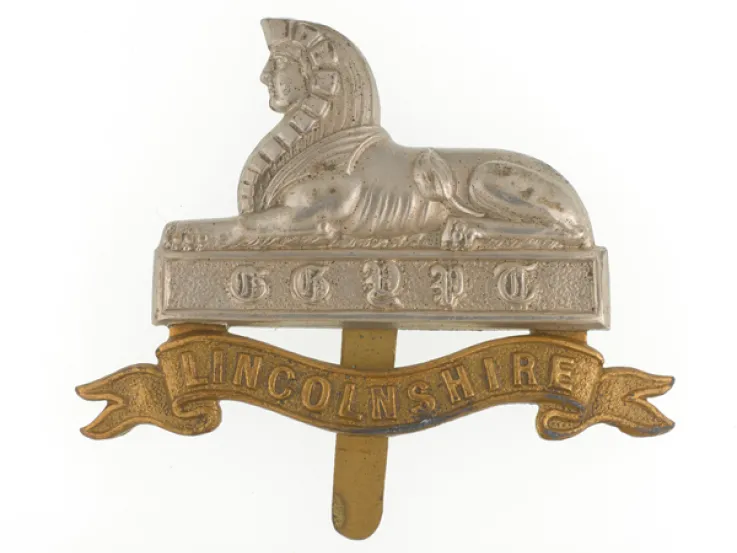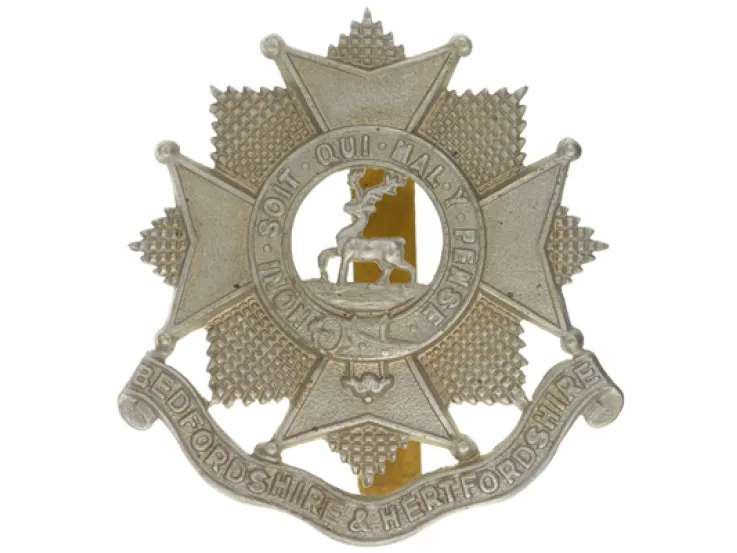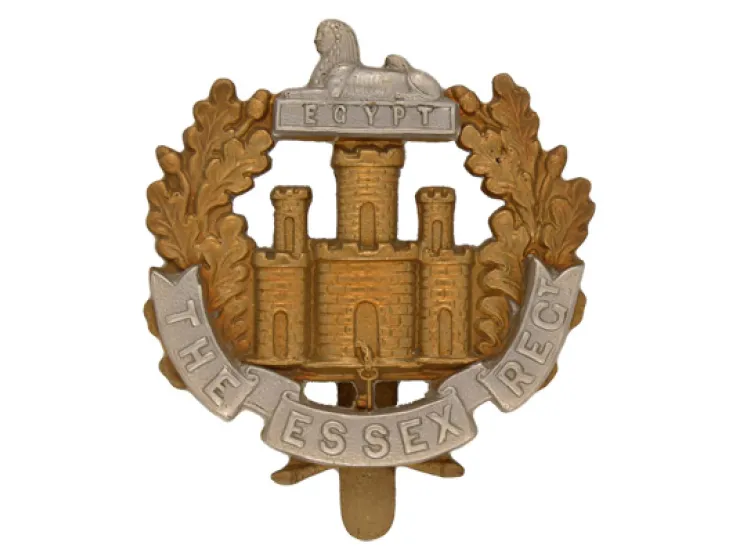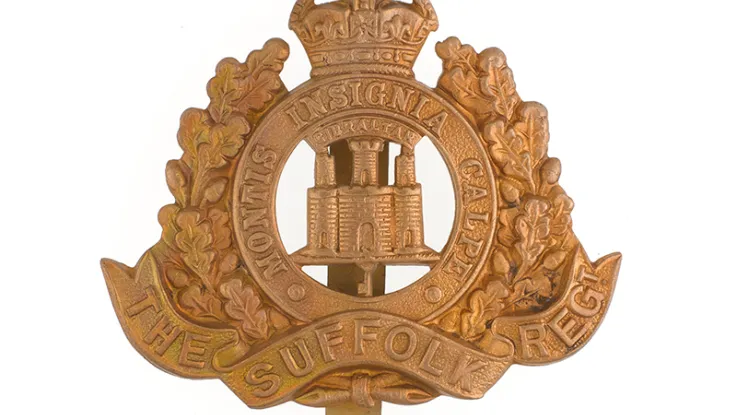Origins
In 1755, with the Seven Years War (1756-63) looming, several new regiments were formed. One of these was raised by Robert Anstruther.
It was initially given the number 60 in the infantry order of precedence. However, this rose to 58 the following year, when the 50th and 51st Regiments of Foot were disbanded.
Early deployments
Its first overseas posting was to North America in 1757, where it fought at Louisburg (1758) and Quebec (1759). It was then sent to join the invasion of Havana in 1762, though eight companies were captured en route by the French. It returned to Britain later that year, moving to Ireland in 1763.
In 1770, it began a 14-year spell in Gibraltar, including service during the Great Siege (1779-83), for which it was granted Gibraltar’s castle and key insignia as its cap badge. In 1782, the regiment gained its county association with Rutlandshire (now Rutland).
French Revolutionary and Napoleonic Wars
It served in the West Indies from 1793 to 1795. Three years later, it returned to Gibraltar and then to Minorca, before fighting at Alexandria in 1801, for which it earned a sphinx emblem on its cap badge.
In 1804, the regiment raised a 2nd Battalion. This new unit’s first overseas deployment was to the Peninsular War (1808-14), joining the British garrison in Lisbon in 1809. It served in the Peninsula for the rest of the conflict, fighting at Salamanca (1812), Burgos (1812), Vitoria (1813) and across the Pyrenees into France.
1st Battalion was in Sicily and mainland Italy from 1805 to 1812, before arriving in the Peninsula. It fought for several months on the east coast of Spain, but was then sent to Canada to join the War of 1812 (1812-15) later that year.
By December 1812, 2nd Battalion had suffered such heavy losses that it had to send six companies home to re-recruit. The other four stayed in Spain as part of 3rd Provisional Battalion. When that battalion broke up in 1814, 2nd Battalion’s ten companies re-grouped in Britain, only to be disbanded the following year.
1st Battalion returned from North America in 1815, too late for Waterloo. It spent the first post-war decade garrisoning Ireland, Jamaica and England.
Victorian period
The regiment spent 11 years in Ceylon (now Sri Lanka) from 1828 and then escorted convict ships from Britain to New South Wales in 1843. It remained in Australia for two years before a 14-year posting in New Zealand that included service during the First Maori War (1846-47). Several men retiring from the regiment opted to stay in New Zealand when the 58th left in 1859.
The 19th century also saw the 58th undertake a grand total of 20 years’ home service in Britain and Ireland.
Its final overseas posting was to South Africa in 1879. It fought in the Zulu War (1879) and then the Transvaal War (1880-81) against the Boers. During the latter conflict, it was the last British regiment ever to carry its colours into action at the Battle of Laing’s Nek on 28 January 1881.
Legacy
It was still in South Africa four months later, when it merged with the 48th (Northamptonshire) Regiment of Foot to form The Northamptonshire Regiment.
Regimental museums
The National Army Museum works with a network of Regimental and Corps Museums across the UK to help preserve and share the history and traditions of the Army and its soldiers.
Discover more about the 58th (Rutlandshire) Regiment of Foot by visiting Abington Park Museum in Northampton.

